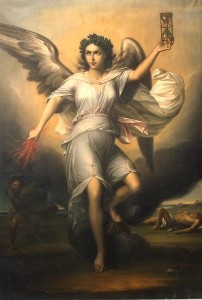You have probably heard, or have said, something along the lines of ‚Äúmy worst nemesis.‚Äù This phrase refers to someone who is a long standing rival or arch enemy, but did you know the word nemesis traces its origins back to the Greek goddess Nemesis? And, she wasn’t all that bad.
The mythological parentage of Nemesis is debated, even among ancient historians of the Roman era. Most often, she is said to be the daughter of the primordial Greek god Oceanus or the infamous Zeus. Nemesis was originally depicted as a goddess who brought balance and justice to the natural world, but as time progressed, her depiction changed to one of divine retribution and vengeance.
Her most famous story from Greek mythology is the one in which the goddess punished the beautiful hunter Narcissus (another ancestor to a common word used today: narcissism). Narcissus spurned those who loved him, and as the story goes, he only ever loved himself. Nemesis felt that Narcissus had too much going for him, without appreciating it, so she lured him to a pool where he became so entranced by his own reflection that he could not leave. For anything. And so he died.
In Greek mythology, Nemesis was designed to bring balance to those that had too much, to give what is due. Nemesis represented that natural balance where the good must be equal to the bad that mankind brought to the world, and vice versa.
-Victoria Parnell
Junior Girl
Girl Museum Inc.
Image url: https://commons.wikimedia.org/wiki/Category:Nemesis#/media/File:Gheorghe_Tattarescu_-_Nemesis,_zeita_razbunarii.jpg

